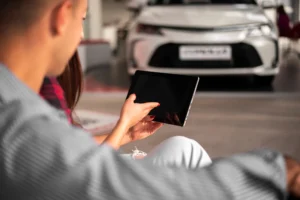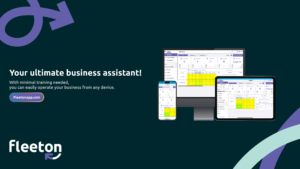In today’s fast-paced world, having a car reservation system is essential for any car rental business. This comprehensive guide will take you through the entire process of implementing a car reservation system, from understanding the basics to testing the system.
By the end of this guide, you will have a clear understanding of what it takes to successfully implement a car reservation system for your business.
Understanding the Basics of a Car Reservation System
When it comes to renting a car, convenience and efficiency are key. That’s where a car reservation system comes into play. This software application revolutionizes the way customers book and manage car rentals online.
Gone are the days of long queues and endless paperwork. With a car reservation system, customers can easily search for available cars, make reservations, track bookings, and manage payments from their homes.
Defining a Car Reservation System
A car reservation system is a sophisticated software application that streamlines the car rental process. It acts as a virtual assistant, guiding customers through every step, from selecting the perfect vehicle to completing the reservation.
This innovative system not only saves time and effort for customers but also enhances the overall efficiency of car rental companies.
Key Components of a Car Reservation System
Behind the scenes, a car reservation system consists of several key components that work together seamlessly to provide a smooth and hassle-free experience for both customers and car rental companies. Let’s take a closer look at these components
- Reservation Management: This component is the backbone of the car reservation system. It handles all aspects of the reservation process, ensuring that customers can easily create and modify their bookings. From selecting the pickup and drop-off locations to specifying the rental duration, this component takes care of it all. It also manages vehicle availability, ensuring that customers can only reserve cars that are actually in stock.
- Inventory Management: Keeping track of available vehicles and their rental statuses is crucial for any car rental company. The inventory management component of a car reservation system does just that. It maintains a comprehensive database of all the cars in the fleet, including their make, model, year, and current condition. By constantly updating this information, the system ensures that customers have accurate and up-to-date options to choose from.
- Payment Processing: Making payments securely and efficiently is an essential part of any online booking system. The payment processing component of a car reservation system integrates with various payment gateways, allowing customers to complete their transactions with ease. Whether it’s through credit cards, online banking, or digital wallets, this component ensures that payments are processed smoothly, giving customers peace of mind.
- Customer Portal: The customer portal is the face of the car reservation system. It provides customers with a user-friendly interface to search for cars, make reservations, and manage their bookings. This component is designed to be intuitive and visually appealing, making it easy for customers to navigate through the available options. From filtering cars based on specific criteria to reviewing past bookings, the customer portal puts the power in the hands of the customers.
By combining these key components, a car reservation system creates a seamless and efficient experience for both customers and car rental companies. It eliminates the need for manual paperwork, reduces administrative overhead, and allows for better resource planning. With the advent of technology, renting a car has never been easier.
Planning Your Car Reservation System
Planning a car reservation system involves several important steps that will help ensure the success of your business. In addition to identifying your target market and establishing your business model, there are other key considerations that should be taken into account.
Identifying Your Target Market
Before designing and developing your car reservation system, it is important to have a clear understanding of your target market. This will help you tailor your system to their specific needs and preferences, ultimately leading to higher customer satisfaction and increased revenue.
When identifying your target market, consider factors such as demographics, geographic location, and customer preferences. Understanding the age, gender, income level, and lifestyle of your target customers can help you make informed decisions about the features and functionalities of your reservation system.
For example, if your target market consists of young professionals living in urban areas, you may want to prioritize features such as mobile app integration, flexible rental durations, and convenient pick-up and drop-off locations. On the other hand, if your target market is families on vacation, you may want to focus on features like child safety seats, spacious vehicles, and discounted rates for longer rental periods.
Establishing Your Business Model
Another crucial aspect of planning your car reservation system is establishing your business model. Your business model will determine how you generate revenue and how you structure your pricing.
There are several different business models to consider when it comes to car rental services. One option is to offer individual rentals, where customers pay for each rental separately. This model is suitable for customers who only need a car occasionally or for short periods of time.
Another option is to offer subscription-based plans, where customers pay a monthly or annual fee in exchange for a certain number of rental days per month. This model is ideal for customers who require a car on a regular basis but don’t want the hassle of owning one.
In addition to these models, you may also consider other monetization strategies such as offering additional services like insurance coverage, GPS navigation systems, or fuel packages. These add-ons can provide an additional source of revenue and enhance the overall customer experience.
When establishing your business model, it is important to consider the competitive landscape and the pricing strategies of your competitors. Conducting market research and analyzing customer demand will help you determine the optimal pricing structure that balances profitability with customer affordability.
In conclusion, planning your car reservation system involves more than just identifying your target market and establishing your business model. It requires careful consideration of various factors such as customer preferences, competitive analysis, and pricing strategies. By taking the time to thoroughly plan your system, you can create a car reservation service that meets the needs of your target market and sets you apart from the competition.
Designing the Car Reservation System
User Interface Design
The user interface (UI) design plays a vital role in the success of your car reservation system. A well-designed UI should be intuitive, visually appealing, and easy to navigate. Consider implementing features such as search filters, vehicle comparison, and booking confirmations to enhance the user experience.
When designing the UI, it is important to consider the target audience of your car reservation system. Are you targeting frequent business travelers or vacationers looking for a reliable rental service? Understanding your users’ needs and preferences will help you create a UI that caters to their specific requirements.
One aspect to consider is the color scheme of your UI. Colors can evoke certain emotions and create a specific atmosphere. For example, using calming blue tones may give users a sense of trust and reliability, while vibrant reds can create a sense of urgency. Experiment with different color combinations to find the one that best aligns with your brand and resonates with your target audience.
In addition to aesthetics, the UI should also prioritize usability. Users should be able to easily navigate through the reservation process, from selecting their desired location and dates to choosing a vehicle and completing the booking. Clear and concise labels, logical grouping of information, and intuitive user flows are essential in creating a seamless experience.
Another important consideration is the responsiveness of your UI. With the increasing use of mobile devices, it is crucial to design a UI that adapts to different screen sizes and resolutions. This ensures that users can access and use your car reservation system on their smartphones or tablets without any issues.
Backend System Design
Behind the scenes, the backend system design is responsible for processing reservations, managing inventory, and handling payment transactions. It is important to develop a robust and secure backend system that can handle high volumes of traffic and ensure data integrity.
When designing the backend system, scalability should be a key consideration. As your car reservation system gains popularity and attracts more users, the backend should be able to handle the increased demand without compromising performance. This may involve implementing load balancing techniques, optimizing database queries, and utilizing caching mechanisms.
Data security is another critical aspect of the backend system design. Users entrust their personal and financial information when making reservations, and it is your responsibility to protect that data. Implementing encryption protocols, secure authentication mechanisms, and regular security audits can help safeguard sensitive information and build trust with your users.
Integration with third-party services is also an important consideration in the backend system design. For example, you may need to integrate with payment gateways to handle online transactions or with mapping services to provide accurate location information. Ensuring seamless integration with these services will enhance the overall functionality and user experience of your car reservation system.
Furthermore, implementing robust error handling and logging mechanisms is crucial for troubleshooting and maintaining the backend system. By logging errors and exceptions, you can easily identify and resolve issues, ensuring a smooth and uninterrupted user experience.
Developing the Car Reservation System
Choosing the Right Technology Stack
When developing your car reservation system, choosing the right technology stack is crucial. Consider factors such as scalability, security, and compatibility with existing systems. Popular technologies for web development include HTML, CSS, JavaScript, and frameworks such as React or Angular.
Building the System Architecture
Building a scalable and efficient system architecture is essential for the successful implementation of your car reservation system. Consider using a microservices architecture to modularize different components, ensuring flexibility and easy scalability as your business grows.
Implementing a car reservation system can revolutionize your car rental business, streamlining the booking process and enhancing customer satisfaction. By following this comprehensive guide, you will be well-equipped to design, develop, and launch a successful car reservation system that meets the needs of your target market.




